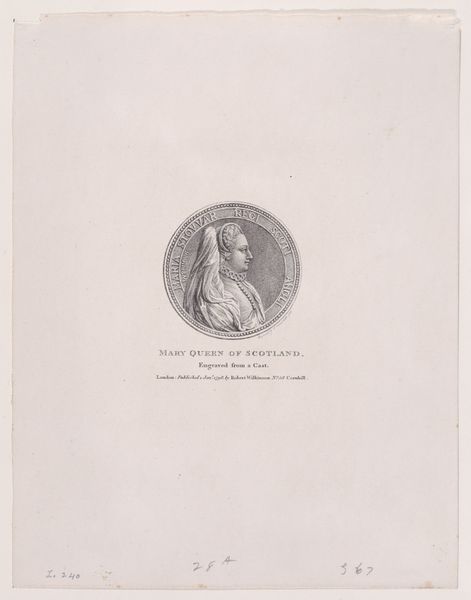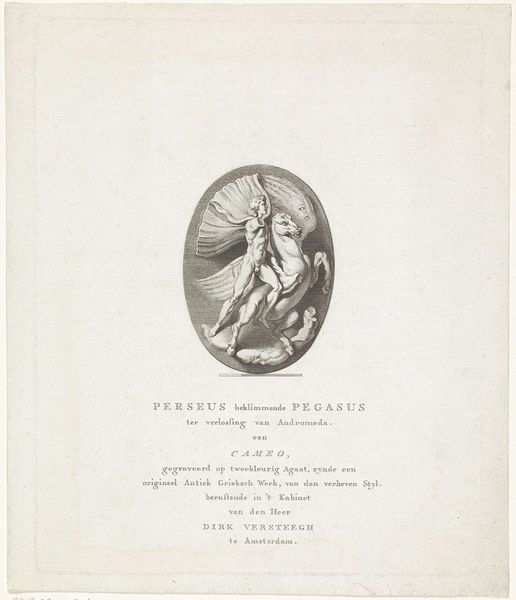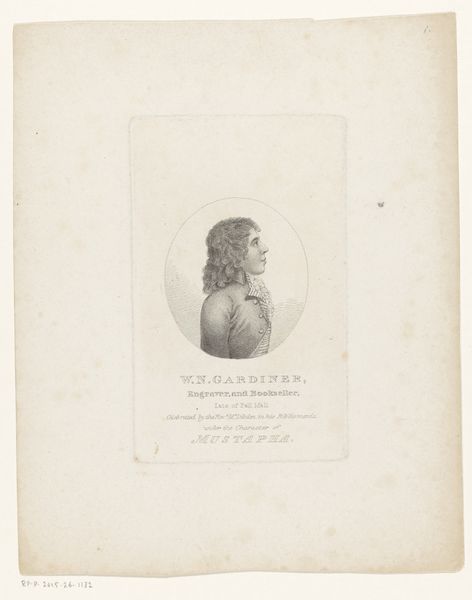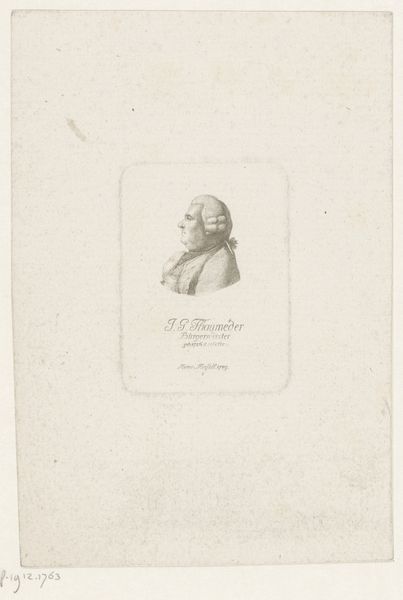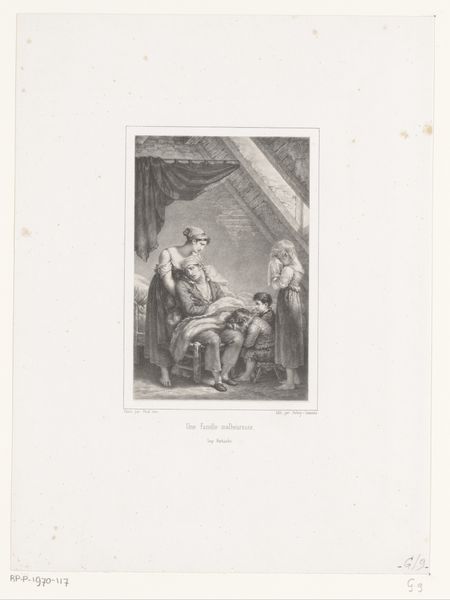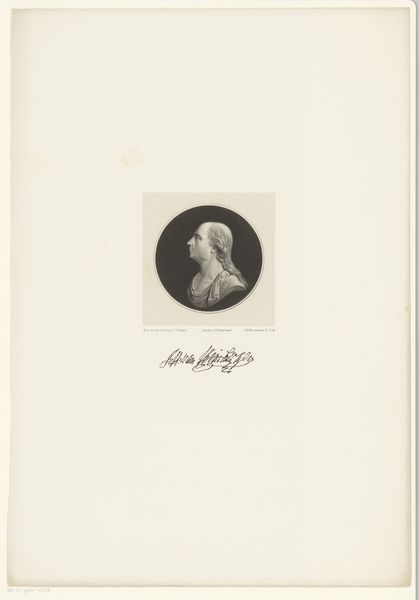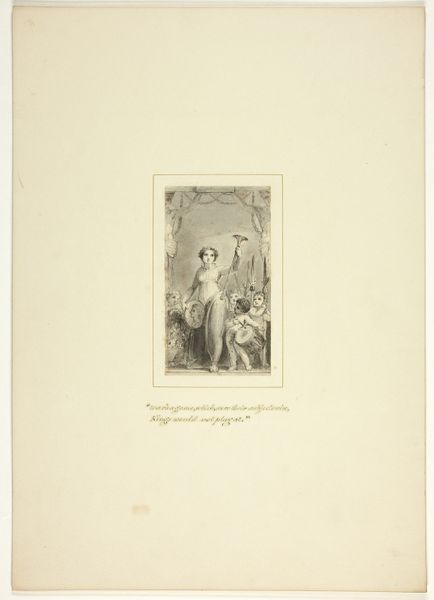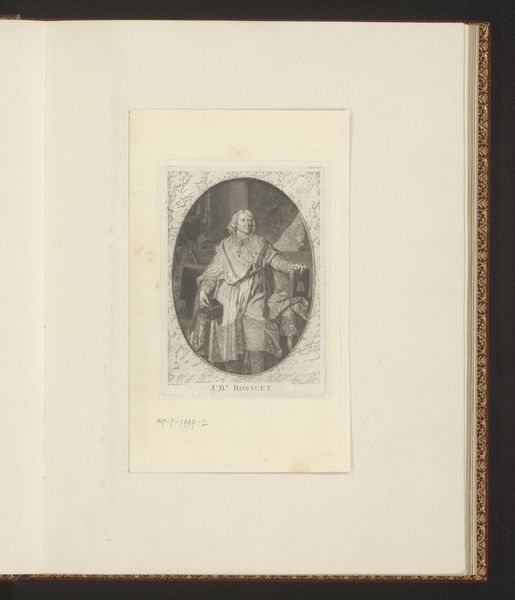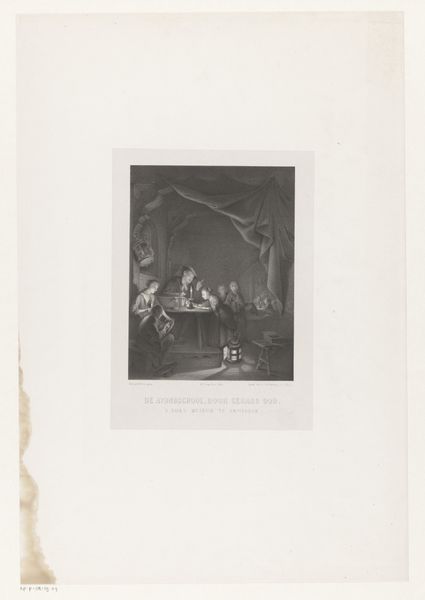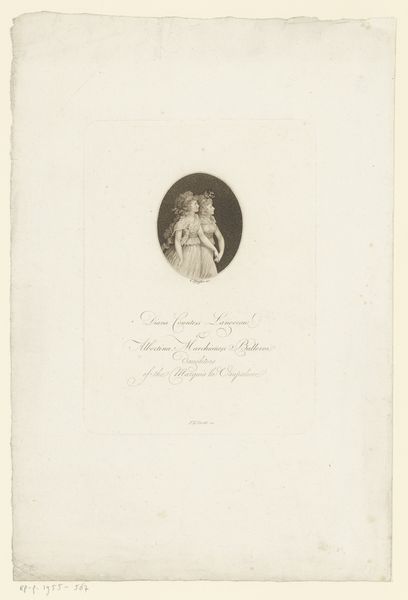
Dimensions: height 295 mm, width 215 mm
Copyright: Rijks Museum: Open Domain
Curator: This is an engraving from between 1837 and 1847 by Faustino Anderloni, titled "Maria Magdalena in de wildernis", held here at the Rijksmuseum. It's a fascinating piece. Editor: It is. The figure of Mary Magdalene is really striking, particularly because it's so light and ethereal in comparison to the dark background and the very present skull. What strikes you most about this work? Curator: What I find most interesting is the contrast between the delicate technique—look at that meticulous line work, likely requiring significant workshop training—and the context. Here, Anderloni reproduces religious iconography for a print market, mediating ‘high art’ and potentially popular consumption. What do you make of that interplay? Editor: So, instead of focusing solely on the religious aspect, you’re looking at it as a product of its time, reflecting artistic production? Curator: Exactly. Consider the engraver's labor; the print’s material form—the paper, the ink; its distribution and intended audience. The engraving process itself allows for reproduction, challenging notions of the unique art object. What happens to aura, in Walter Benjamin's terms? Does mass production elevate or degrade such iconic themes? Editor: I never thought about the social context of creating a work of art. Now I wonder what role this engraving played in its era and who could afford this kind of imagery at that time. Curator: Indeed. We can also reflect on how art historical narratives are formed when we re-center the means of production. That kind of perspective makes one think beyond mere artistic genius, wouldn't you agree? Editor: Definitely. It pushes you to see art as part of the bigger world, produced by very specific processes and people. Thank you.
Comments
No comments
Be the first to comment and join the conversation on the ultimate creative platform.
